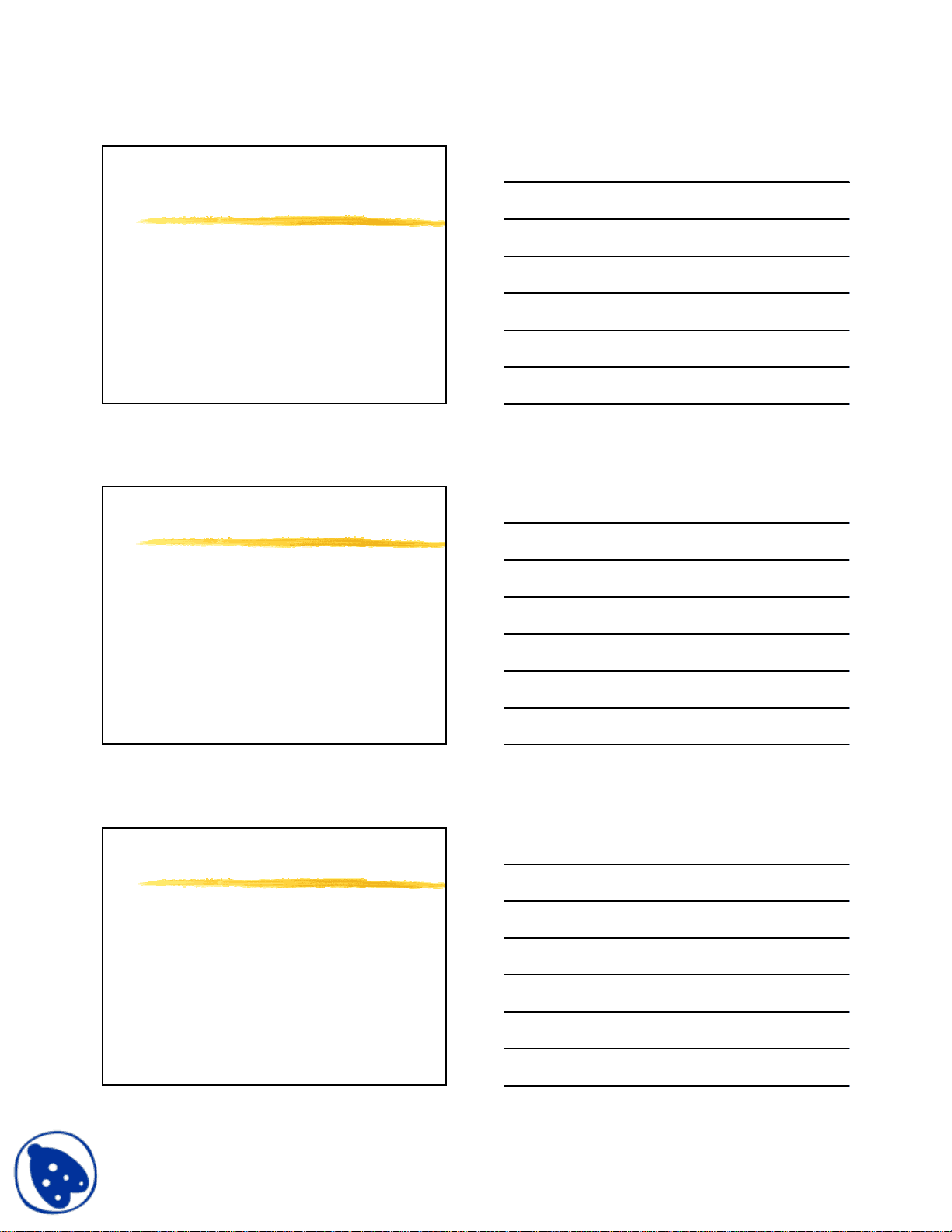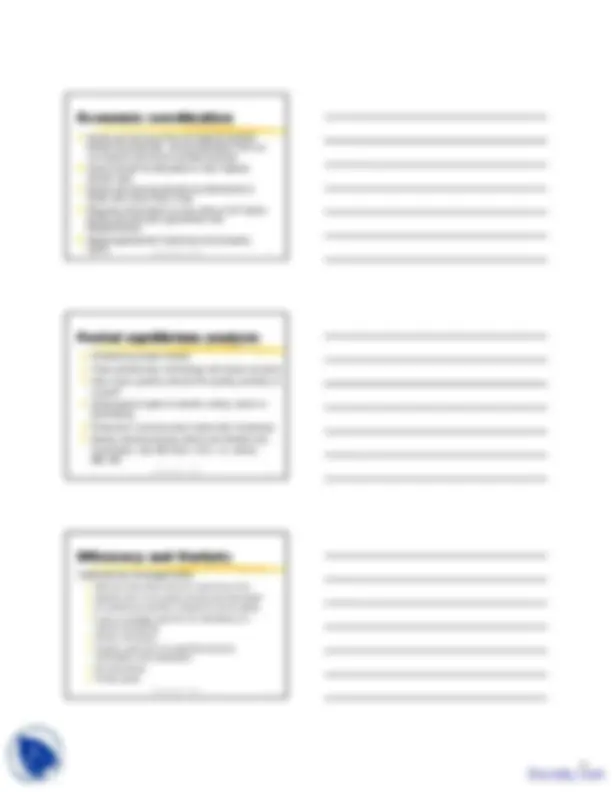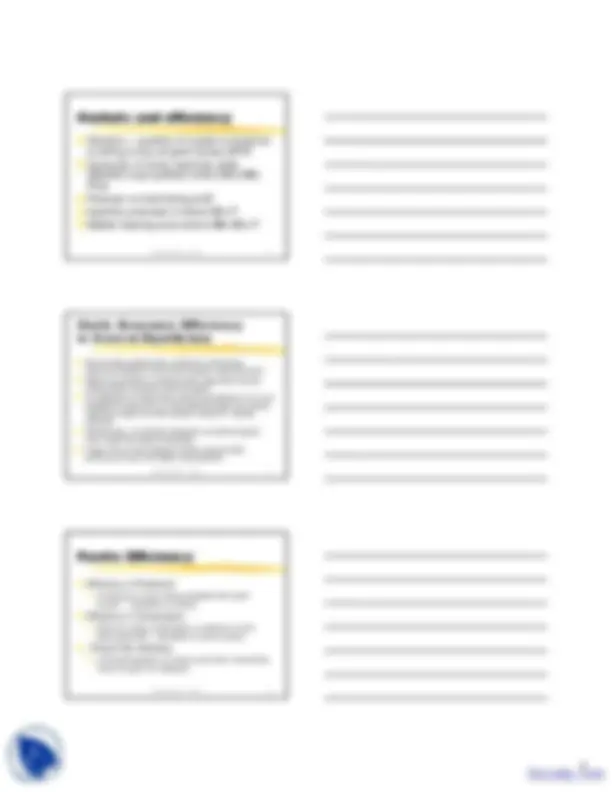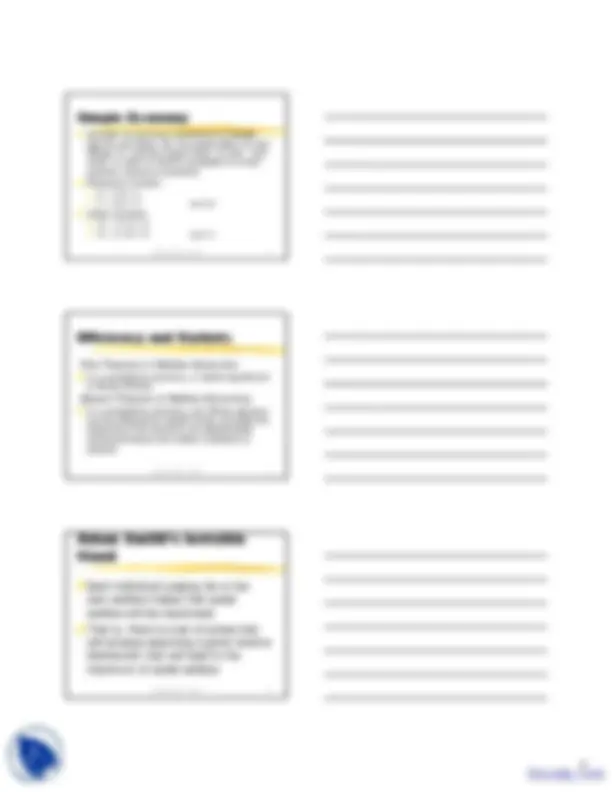





Study with the several resources on Docsity

Earn points by helping other students or get them with a premium plan


Prepare for your exams
Study with the several resources on Docsity

Earn points to download
Earn points by helping other students or get them with a premium plan
Community
Ask the community for help and clear up your study doubts
Discover the best universities in your country according to Docsity users
Free resources
Download our free guides on studying techniques, anxiety management strategies, and thesis advice from Docsity tutors
This lecture is from Economics of Environmental Resources. Key important points are: Welfare Economics, Efficient Allocation of Resources, Branch of Study, Formulate Propositions, Alternative Economic Situations, Scale of Better Or Worse, Glorious Failure, Efficient Allocation, Economic Coordination, System For Organizing Production
Typology: Slides
1 / 6

This page cannot be seen from the preview
Don't miss anything!




AEC 829 -SEPT 17, 2003 2
] A. What is welfare economics? ] B. What is an efficient allocation of resources? ] C. What assumptions underlay the concept of efficiency? ] D. What relationship is there between efficiency and perfect markets? ] E. What is the relationship between property rights, externalities and transactions costs?
AEC 829 -SEPT 17, 2003 3
AEC 829 -SEPT 17, 2003 4
AEC 829 -SEPT 17, 2003 5
] Efficiency means that all gains from trade have been exhausted ] There is no such thing as a unique efficient solution ] “Efficient allocation” does not mean good or best. ] Society can prefer an inefficient allocation to an efficient allocation. ] There is no value-free way of determining the correct or best allocation of resources. ] There are institutional arrangements that guarantee an efficient allocation of resources.
AEC 829 -SEPT 17, 2003 6
] Economic coordination ] Economy is a system for organizing production of goods and services and their distribution among people, i.e. allocation of scarce resources among possible alternative uses ] Co-ordination of production, consumption, saving and investment decisions, given resource scarcity, technology, needs and desires of citizens, and the system of rights.
AEC 829 -SEPT 17, 2003 10
AEC 829 -SEPT 17, 2003 11
Static Economic Efficiency
in General Equilibrium
] We consider preferences, production technology, resource availability and initial property rights as given. ] Resource allocation to decide what resources (inputs), what goods to produce and who gets? ] An allocation of resources is said to be efficient if it is not possible to make one or more persons better off without making at least one other person worse off. (Pareto efficient) ] Alternatively, an efficient allocation is where all gains from trade have been exhausted. ] A gain one or more persons without anyone else suffering is known as Pareto improvement.
AEC 829 -SEPT 17, 2003 12
] Efficiency in Production \ Is maximum output being produced with given inputs? - (allocation of inputs) ] Efficiency in Consumption \ Given an output combination, is maximum utility being achieved? - (allocation of given output) ] Product Mix efficiency \ Is the configuration of output such that it maximizes utility? (output mix decision)
AEC 829 -SEPT 17, 2003 13
] Consider an economy consisting of 2 people, Sam(A) and Oscar (B), two goods Wool (X) and Wheat (Y), and two inputs Land ( K) and and Labor (L) each of which is available in a fixed quantity (resource constraint) ] Production function \ X = X (Kx^ , Lx^ ) \ Y = X (K Y, L Y) (eq 5.2) ] Utility functions \ U A^ = U A^ (X A, Y A^ ) \ U B^ = U B^ (XB, Y B^ ) (eq 5.1)
AEC 829 -SEPT 17, 2003 14
] In a competitive economy, a market equilibrium is Pareto efficient
] In a competitive economy, any Pareto optimum can be achieved by market forces, provided the resources of the economy are appropriately distributed before the market is allowed to operate
AEC 829 -SEPT 17, 2003 15